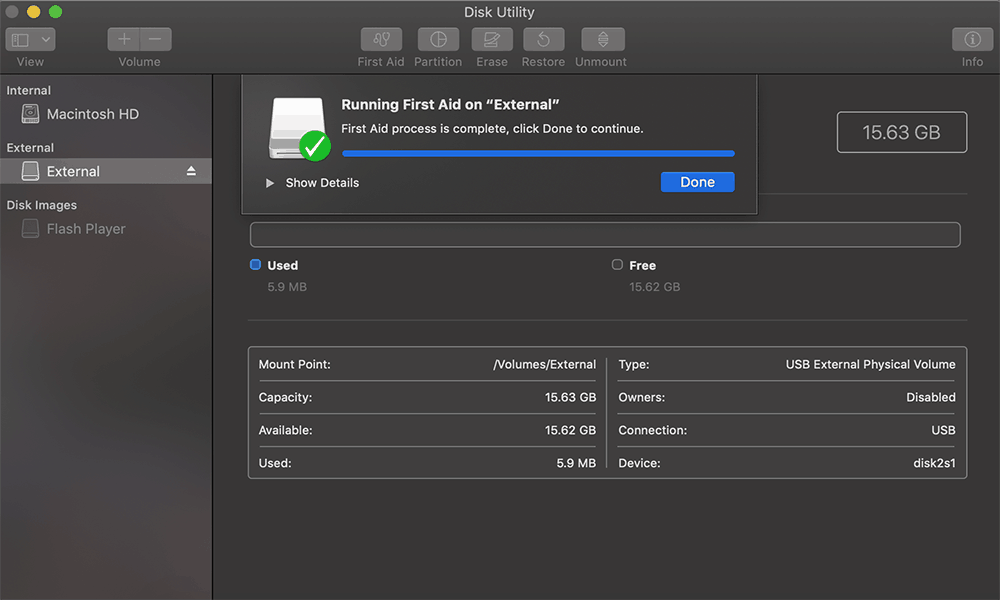Once Time Machine's first backup to the first drive is complete, disconnect it from your Mac completely. Attach the second drive and repeat the steps above. Switching between Time Machine disks requires virtually no effort on your part, but you don't want to connect both Time Machine disks simultaneously. Select Seagate Backup Plus Drive (or the external drive as shown) connected to your Mac, and choose Use for Backup. Your external backup drive is now ready, and a Time Machine backup will start within 2 minutes. Photo blender for mac. If Time Machine has been previously set up, open Time Machine and choose Select Disk then select the external.

- But it took a full three releases from the first APFS appearance until Time Machine backups could be written to drives formatted with APFS: macOS 11.0 Big Sur is the first release to allow that.
- Backup Mac to an External Drive using Time Machine Time Machine is installed by default on every Mac operating system. It is a built-in backup feature for your Mac. With the help of Time Machine, you can automatically back up all of your files, including apps, music, photos, email, documents, and system files.
Use Time Machine, the built-in backup feature of your Mac, to automatically back up your personal data, including apps, music, photos, emails and documents. Having a backup allows you to recover files that have been deleted or were lost because the hard disk (or SSD) in your Mac needed to be erased or replaced. Find out how to restore your Mac from a backup.
Create a Time Machine backup
To create backups with Time Machine, all you need is an external storage device. After you've connected the storage device and selected it as your backup disk, Time Machine will automatically make hourly backups for the past 24 hours, daily backups for the past month and weekly backups for all previous months. The oldest backups will be deleted when your backup disk is full.
Connect an external storage device

- But it took a full three releases from the first APFS appearance until Time Machine backups could be written to drives formatted with APFS: macOS 11.0 Big Sur is the first release to allow that.
- Backup Mac to an External Drive using Time Machine Time Machine is installed by default on every Mac operating system. It is a built-in backup feature for your Mac. With the help of Time Machine, you can automatically back up all of your files, including apps, music, photos, email, documents, and system files.
Use Time Machine, the built-in backup feature of your Mac, to automatically back up your personal data, including apps, music, photos, emails and documents. Having a backup allows you to recover files that have been deleted or were lost because the hard disk (or SSD) in your Mac needed to be erased or replaced. Find out how to restore your Mac from a backup.
Create a Time Machine backup
To create backups with Time Machine, all you need is an external storage device. After you've connected the storage device and selected it as your backup disk, Time Machine will automatically make hourly backups for the past 24 hours, daily backups for the past month and weekly backups for all previous months. The oldest backups will be deleted when your backup disk is full.
Connect an external storage device
Connect one of the following external storage devices, sold separately. Find out more about backup disks that you can use with Time Machine.
- External drive connected to your Mac, such as a USB or Thunderbolt drive
- Network-attached storage (NAS) device that supports Time Machine over SMB
- Mac shared as a Time Machine backup destination
- AirPort Time Capsule, or external drive connected to an AirPort Time capsule or AirPort Extreme Base Station (802.11ac)
Select your storage device as the backup disk
- Open Time Machine preferences from the Time Machine menu in the menu bar. Or choose Apple menu > System Preferences, then click Time Machine.
- Click Select Backup Disk.
- Select your backup disk from the list of available disks. To make your backup only accessible to users who have the backup password, you can select 'Encrypt backups'. Then click Use Disk:
If the disk you've selected hasn't been formatted as required by Time Machine, you'll be prompted to erase the disk first. Click Erase to proceed. This will erase all of the information on the backup disk.
Enjoy the convenience of automatic backups
After you've selected a backup disk, Time Machine will immediately start making periodic backups – automatically and without any further action needed by you. The first backup may take a long time, but you can continue using your Mac while a backup is underway. Time Machine only backs up the files that have changed since the previous backup, so future backups will be faster.
To start a backup manually, choose Back Up Now from the Time Machine menu in the menu bar. Use the same menu to check the status of a backup or skip a backup in progress.
Learn more
Best Backup Drive For Mac
- Find out about other ways to back up and restore files
- If you back up to multiple disks, you can press and hold the Option key, then choose Browse Other Backup Disks from the Time Machine menu.
- To exclude items from your backup, open Time Machine preferences, click Options, then click the add (+) button to add an item to be excluded. To stop excluding an item, such as an external hard drive, select the item and click the remove (–) button.
- If you're using Time Machine to back up to a network disk, you can verify those backups to make sure they're in good condition. Press and hold Option, then choose Verify Backups from the Time Machine menu.

